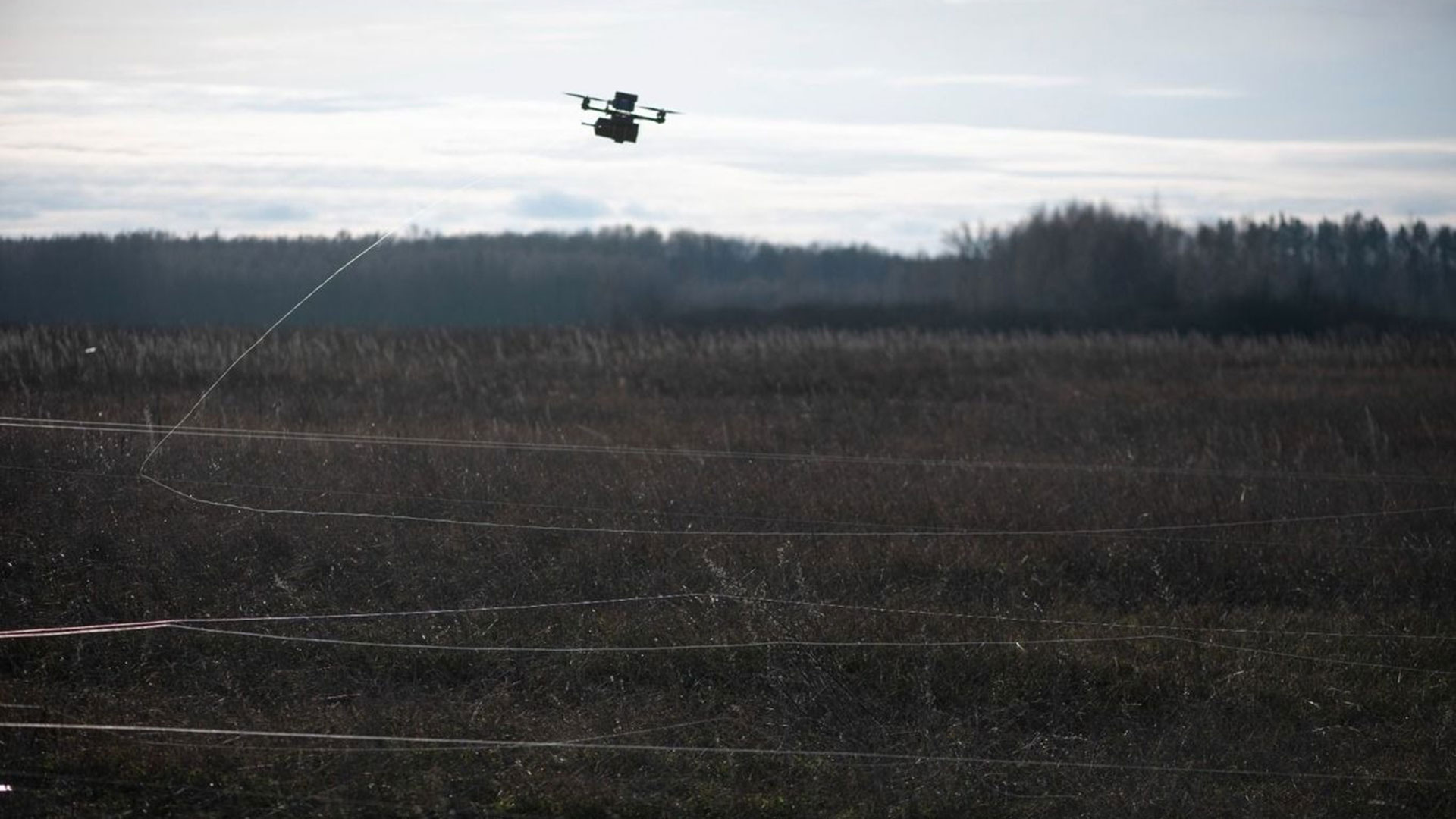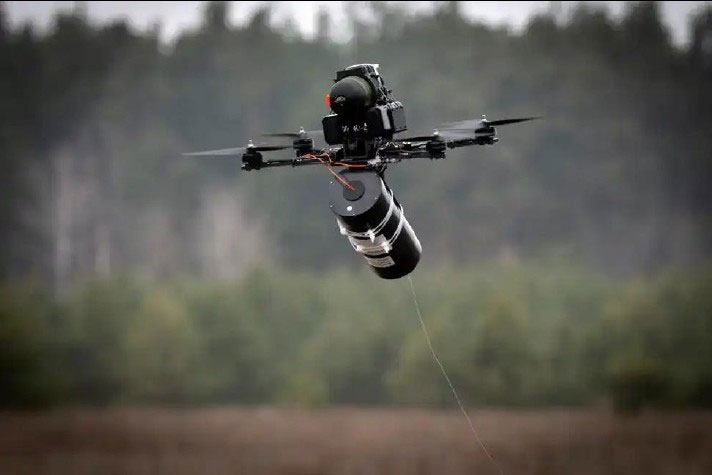Ukraine’s rotating barbed wire drone barriers discovered by Russians — motorized barriers tear and slice the fiber-optic lines that jam-proof drones leave in their trail
Motorized barriers tear and slice the fibers that enemy drones leave in their trails.

Remote control drones have added are a terrifying new dimension to warfare in the 2020s. However, a Ukrainian invention that is tangling the efforts of the invaders to hit targets with their kamikaze drones has been revealed by a Russian Vlogger, reports Militarnyi.
Fiber optic cable filled vistas
Farmland littered with fiber optic cabling has become an instantly recognizable vista in the Russia-Ukraine war. The hazy wisps of tangled cabling, snagged in wheat stalks and hedgerows, are the ghostly remnants of a fierce drone war.
As anti-drone jamming technology has hardened, both sides of the conflict have increased their use of tethered drones. But using these umbilical cords, to avoid wireless jamming, doesn’t limit the drone range as much as you might expect.

The source notes that there are optical fiber-tethered drones that have spools, allowing them to strike targets over 40km (25 miles) away. A successful anti-tank tethered drone strike back in May, by Ukraine’s Birds of Magyar brigade, is said to have been completed from a distance of 42km (26 miles). Furthermore, a Ukrainian twin-engine Darts drone prototype features a 50km (31 miles) coil.
Barbed wire kebab
Sometimes low tech solutions are the most practical for high-tech problems. This philosophy has given rise to the optical fiber tethered drone. Now, Ukraine has a similarly simple solution to tethered enemy drones crossing miles-and-miles into its territory.
In a nutshell, the Ukrainian invention we see in the video consists of a rotating barbed wire, or razor wire, fence. This is a 150m (~500ft) long fence, and at one end a battery-powered motor twists the wire barrier once per minute. According to the report, such a fence can run 12 hours a day.
Drones don’t pull cabling in the air, but lay it on the ground behind them. Thus, if the barbed wire can rotate and tangle it, and eventually snap the fiber, the enemy drones will fail to reach their targets. We don’t get any more information about the installation, but we’d expect parallel fences rotating in opposite directions to each other to maximize fiber snapping speeds.
Get Tom's Hardware's best news and in-depth reviews, straight to your inbox.
Militarnyi also notes that it is too risky to install these fences near the front line, so they are mainly used to help prevent deeper Russian drone incursions.
Follow Tom's Hardware on Google News, or add us as a preferred source, to get our up-to-date news, analysis, and reviews in your feeds. Make sure to click the Follow button!

Mark Tyson is a news editor at Tom's Hardware. He enjoys covering the full breadth of PC tech; from business and semiconductor design to products approaching the edge of reason.
-
JRStern Madness!Reply
First I'm surprised that the drones aren't autonomous and still need realtime guidance at all.
Second I'd look more into robust radio communications, spread-spectrum, high error-correction, with a grid of physical relays. I guess you can get a little bandwidth that way but getting a lot might be challenging. Or that it can be done, but not at the cheap, disposable cost of the fiber. -
fiyz Can't we just make the tow missiles cheaper? I'm just saying, I get that drones are cheap... But we've been using similar ordinance for a while? Like, upgrade the RPG into a tow missile.Reply
